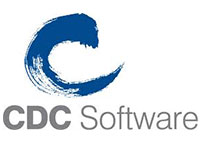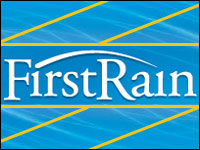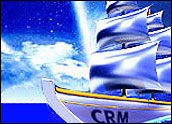
RFID has been on a bit of a roller coaster ride. It started with a bang a few years ago, when Wal-Mart and the Department of Defense issued their edicts that all suppliers would need to get on the RFID bandwagon within a set time frame. Well, that deadline has come and gone, and uptake has fallen well short of the mark.
While the expectation was that RFID would revolutionize the supply chain from end to end, achieving that transformation was an overly ambitious goal. Many hurdles stood in the way of ubiquitous adoption — from the cost of tags and problems with reader accuracy (metals and liquids were the main culprits) to privacy and data integration.
In fact, of the close to 150 Wal-Mart distribution centers, the number of RFID-enabled facilities can be counted on one hand, said Bob Novack, associate professor of supply chain management for Penn State.
“I don’t think the Department of Defense is any further along,” he told CRM Buyer. “Pilots, for the most part, are still basic slap-and-ship applications at the case level.”
Those that have scaled back on their RFID aspirations, however, are now looking at the technology in a more strategic light. Although it may not be ideal for distribution center or shelf-level applications because of signal interference or complexity, for example, RFID is definitely proving to be of some worth in helping businesses manage back-of-the-store inventory, track high-value products (e.g. pharmaceuticals, electronics, etc.), and reduce loss prevention.
Falling Short of the Hype
Part of the problem behind the disillusionment has been the age-old dilemma of something overpromising and underdelivering. Also, RFID has become a classic case of miscommunication and misunderstanding.
“The market is still struggling with a lack of unbiased advice of what to do with RFID, so there has not been a fundamental shift in momentum,” said Lino Casalino, a partner with PricewaterhouseCoopers.
“It’s littered with technology and software vendors that have their own points of view,” Casalino told CRM Buyer. “This makes it challenging for a company to step back and know the right thing to do. It’s very hard to know fact from fiction.”
Building the business case for RFID has been one of the biggest hurdles to widespread adoption, said Burt Blanchard, manager of education and research for the Council of Supply Chain Management Professionals (CSCMP). “The question is still out there about where the ROI comes into play, and I think it’s going to take a while before businesses can realize it.”
Beyond the cost of implementation and integration, other hurdles that stand in the way of achieving an acceptable ROI are data sharing and cross-industry cooperation, Blanchard told CRM Buyer.
“There are still questions surrounding the point of origin: Who owns what share of that data, and are you going to share it? Is everyone using it, and if so, are they using it correctly? We still have a long way to go before we can get all the players in the supply chain collaborating,” Blanchard said, “and for a lot of companies on the sidelines, they still want proof that it works before making the investment.”
Privacy also continues to be a sticking point. Although some of the public concerns may be unfounded, the reality is there continue to be “major discussions around that issue,” noted Blanchard. “We still see citizens protesting RFID forums. Until the data collection and tracking issues are dealt with, privacy will always be a concern.”
Environmental waste has raised flags in some quarters, since RFID barcodes use chemicals for etching that can be considered hazardous waste. Some companies are experimenting with carbon-based paint to spray tags onto boxes, but those efforts are still in the pilot phase.
Sending the Right Signals
Despite the fact that big guns like Kraft and Kimberly Clark have been pushing adoption of RFID since the early days of the Wal-Mart mandate, inconsistencies in terms of RFID usage and policies for multiple parties made it extremely challenging from a practical standpoint.
“It gets labor-intensive for shippers, since they might be tagging for Wal-Mart but not Target,” noted Penn State’s Novack, “and while the technology is good, the cost of tags would have to be under a penny a piece to make it cost efficient.”
There is some merit in RFID for receiving and shipping at the distribution level, he conceded, but “when it comes to picking, there are still technology issues with metal racking and other systems such as computers and trucks reflecting signals.
“That interferes with a lot with operations,” Novack explained. “So we’re not really seeing a lot of opportunities for RFID in distribution centers. The biggest opportunity that Wal-Mart has seen is in the back rooms of the stores for improving inventory control.”
For the most part, the back rooms are fairly crowded — not well-managed — and inventory is hard to find, he continued. “The Wal-Mart thinking is if you can read the RFID chip as it comes off the trailer, sort inventory to carts, and have readers on the door as they are rolled out to the store, you can get much closer data on what inventory is on the floor at any given time. In other words, it gives them visibility as close to the store shelf as possible without having to tag shelves individually.”
That ability translates into many fewer products out of stock. Wal-Mart is also working with RFID for tracking promotional items.
New Directions
Sam’s Club is a bit of an exception to the trend, Novack commented. The company is currently in a three-phase RFID implementation project to place readers on exit doors for loss prevention; on the receiving dock; and on ceilings to track all items in the store at once.
Pending federal regulations on traceability may push adoption of RFID, especially in the pharmaceutical markets, he added. “A bottle of tablets could be worth several thousand dollars, so the cost of tagging that turns out to be relatively cheap. “Given the levels of risk in the pharmaceutical market, it’s easy to justify.”
Some apparel retailers have been able to realize considerable success in stripping out costs in their supply chain. However, these have been operations that run closed-loop systems in which they control manufacturing, shipping, distribution and sales of their own merchandise. For one apparel company, having the ability to tag at source and track items from production to the retail store improved inventory accuracy from 80 percent to 99 percent.
Inventory-taking at the store level used to take 36 man hours with standard barcode technology. With RFID, the job can be done with two people in 2.5 hours.
While there are some success stories of note, as far as the future of RFID is concerned, the recession is taking its toll on a lot of projects that are still on the drawing table, according to PricewaterhouseCoopers’ Casalino. “It’s not even just an RFID thing. We’re already seeing people delaying those ‘nice to have’ technology decisions. Times are tough, so the whole mood is one of caution. We’re seeing a lot of clients focused on staying fiscally responsible, and RFID has simply not matured enough for them to take it on right now.”






















































I’ve been pondering the feasibility of a durable RFID tag molded into a small thin block using a detachable base. This would spread the cost over multiple uses. A simple, yet sturdy (and difficult to pick) release key system that would allow the tags to be clicked into a new base for reuse would make the base with a super sticky pad the only disposable part. The tag itself would be re-entered to track the next item. Does this exist?
RFID is continuing to be advanced by new technological breakthroughs that make it more accurate than ever. Accuracy is going to be recognized as the determining factor for ROI in RFID. Once a company can reliably deliver data that shows exactly where and when a person or thing is, it will open up a whole new realm of data collection and analysis that will empower organizations to make fully-informed decisions that will impact their bottom lines.